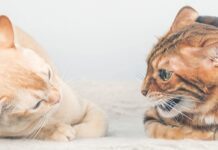Research on pica in cats has found that the behavior does not appear to be the result of a suboptimal environment, early weaning or increased appetite. A report on the “Characterization of pica and chewing behaviors in privately owned cats: a case-control study,” published in the Journal of Feline Medicine and Surgery and based on research at the University of Montreal Veterinary Teaching Hospital, sought answers about pica via owner questionnaires.
Emphasis was placed on the item ingested, behavioral development, environment and general health. Owners of healthy cats not exhibiting pica were recruited as a control group.
The behavior was found to most commonly involve shoelaces or threads, followed by plastic, fabric, rubber, paper or cardboard, and wood. Some cats ingested specific items but only chewed others. A positive association was found between sucking fabric and ingesting it. The prevalence of self-sucking behavior was significantly higher in the pica group than the control group.
Cats with pica were less commonly fed ad libitum (having food available at all times), compared to cats in the control group. And cats with pica vomited significantly more often than control cats.



